Resident Evil: Operation Raccoon City Preview
Raccoon tale.
You need to forget the name. Which is quite difficult, given that the story of Resident Evil: Operation Raccoon City plays on the second and third games in Capcom's long-running series.
This time, you're playing as the bad guys: Umbrella Corp's USS Black Ops team, sent in to destroy any evidence of the company's illegal activities. And that evidence includes anyone who might want the truth to be outed.
Removing the franchise's history from your mind is important, though, because this isn't Resident Evil as we know it. Instead, for all intents and purposes, it's a strange hybrid, a third-person cover-shooter that sees you blasting, kicking and punching your way through hordes of zombies and enemy forces, across a series of dark and dingy story-driven levels, as part of a team of four.
And it's fast - or, at least, it's designed to be played that way. Trundling along feels oddly sluggish, but hold down the left stick to sprint and suddenly you're flying down corridors, the camera bobbing wildly, the environment blurring at the edges of the screen. While recent Resident Evils have taken steps away from the series' traditionally cautious pace, Operation Raccoon City makes a decisive clunk into top gear: this is a high-speed action game through and through.
When you're sprinting from area to area, darting to and from various chest-high objects, taking blind pot-shots or peeking out just long enough to aim for an enemy's skull, it all feels gleefully frenetic. You snap in and out of cover automatically, and the process is fluid, intuitive. The weapons have real weight to them, too, with the ra-ta-tat of machine guns rumbling satisfyingly through the controller.
And the shotgun deserves a paragraph of its own. It's absolutely joyous, firing with an almighty sound, sending blood and guts exploding from where your enemy's torso used to be. 'Ka-BOOM!' I have enthusiastically scrawled among my notes.
In fact, shotgun or no shotgun, Operation Raccoon City revels in streams of gore. Blood flows freely in this game. Or, rather, it spurts considerable distances from every new orifice your bullets create. Blast an enemy's arm off and they'll stagger around, still trying to attack, now with a river of crimson cascading from their stump like a waterfall. This isn't gritty, survival-horror bloodshed; it's ludicrous, over-the-top violence, and the change of pace is indicative of the direction the game as a whole is taking.
While your team is only ever four-strong, six classes are available to choose from. Vector is the recon specialist, equipped with cloaking capabilities. Lupo's the assault class - particularly good with guns, essentially. Four Eyes is your team's scientist, capable of programming bio-organic weapons. Spectre's the sneaky surveillance type, Bertha's your medic, and Beltway's your man for demolitions.
Each class has its own special abilities, which can be unlocked and upgraded as you progress through the campaign, as can the weapons. Supposedly, selecting the best combination of classes and starting loadouts will be key to getting the most out of Operation Raccoon City. From our time with the game, it's not clear how much of an effect different setups will have, but we're promised that small elements of the story, at least, will vary depending on who you've got on-board.
There's also a competitive multiplayer component, which we covered in more detail back in April, but this wasn't available to play at a recent Capcom press event. Nor was the campaign available to play in co-op mode, which is unfortunate, as playing solo leaves a little to be desired. Your buddies are still very much in attendance, but in single-player your human companions are swapped out for AI-controlled replacements. It's just a shame that - at this stage at least - the 'intelligence' part seems to have been left out.
And my goodness, they're not helpful. They enjoy either hanging back and waiting for you to put your own life on the line or charging off in front of you before standing out in the open, right in the enemy's line of fire and, more importantly, in the bloody way.
While they occasionally grow a brain cell or two and take cover, other times they seem to be flailing blindly, desperately hoping that just a few shots might luckily hit their target. And in one especially infuriating section, every single member of my team decided it would make sense to stride confidently through the laser beam of a trip mine, one after the other. Uh, guys? These things glow bright red for a reason.
Enemy AI isn't a great deal better, but at least it's got an excuse: uninfected foes take the form of opposition special forces, who act as convincing cannon fodder if nothing else. They pop up and down at the right moments, and as long as you don't try to flank them, which seems to leave them rooted to the spot for a couple of seconds as they try to figure out what's going on, their behaviour is almost passable. It would add to the challenge, however, if your opponents worked more solidly as a team - and it would dramatically reduce the frustration if the friendly AI would follow suit.
"Uninfected foes take the form of opposition special forces, who act as convincing cannon fodder if nothing else."
Despite quirks of intelligence, it's the human enemies that remain the most engaging to fight in the couple of levels we've seen. Zombies are still of the Resident Evil ilk: they don't charge at you relentlessly, preferring instead to clumsily amble in your direction. But where the Resi of old added difficulty by restricting both your movement and your ammunition, the new third-person shooter setup makes felling them a doddle. With four of you unleashing assault weapon rounds at their skulls, they're dead before they've had the chance to get close.
There's been a big thing made of using these zombies as a means of distracting more powerful enemies, and it's true that this tactic proves successful on occasion. It can be satisfying to lure a handful of zombies into an attack on enemy troops, for example. But more often than not, scenes don't play out in this way, because it's far safer bet to take aim and fire at anything that moves than it is to risk anything more manipulative.
Larger groups of zombies pose more of a threat, moving in to surround your group and frequently forcing you into melee combat. These encounters are more frantic, but it's still a matter of hammering a single button until your enemies are down, or at least pushed back enough for you to mount a proper assault.
Waves of standard zombies leave you crying out for more interesting action. But while the tough, wall-clambering Lickers are introduced at the end of the second level, incapacitating you with their stretchy tongues, it's the climax of the prologue that impresses the most.
With the t-virus accidentally unleashed and infected scientist William Berkin giving chase, now a massive hulk of angry flesh, we found ourselves fighting to escape the secret Umbrella Corp facility as it burnt and collapsed around us. Jets of flame and steam burst from walls and floors, explosions rocking the scenery as we made a mad and desperate dash for the exit.
It's these sorts of sequences that the game could thrive upon if they're woven well enough into the levels. Resident Evil: Operation Raccoon City lacks the dynamism of the likes of Left 4 Dead, and the tension of the series' survival-horror past. This isn't Resident Evil as we know it: it is, unapologetically, a third-person cover-shooter. In such a saturated genre, it needs its own identity to get by - but inject the right amount of drama, and Slant Six Games might still have a chance of making that so.


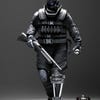
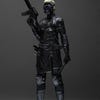



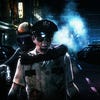



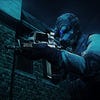




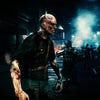







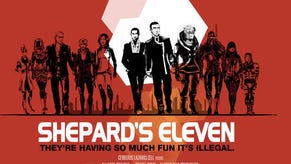





.png?width=291&height=164&fit=crop&quality=80&format=jpg&auto=webp)



